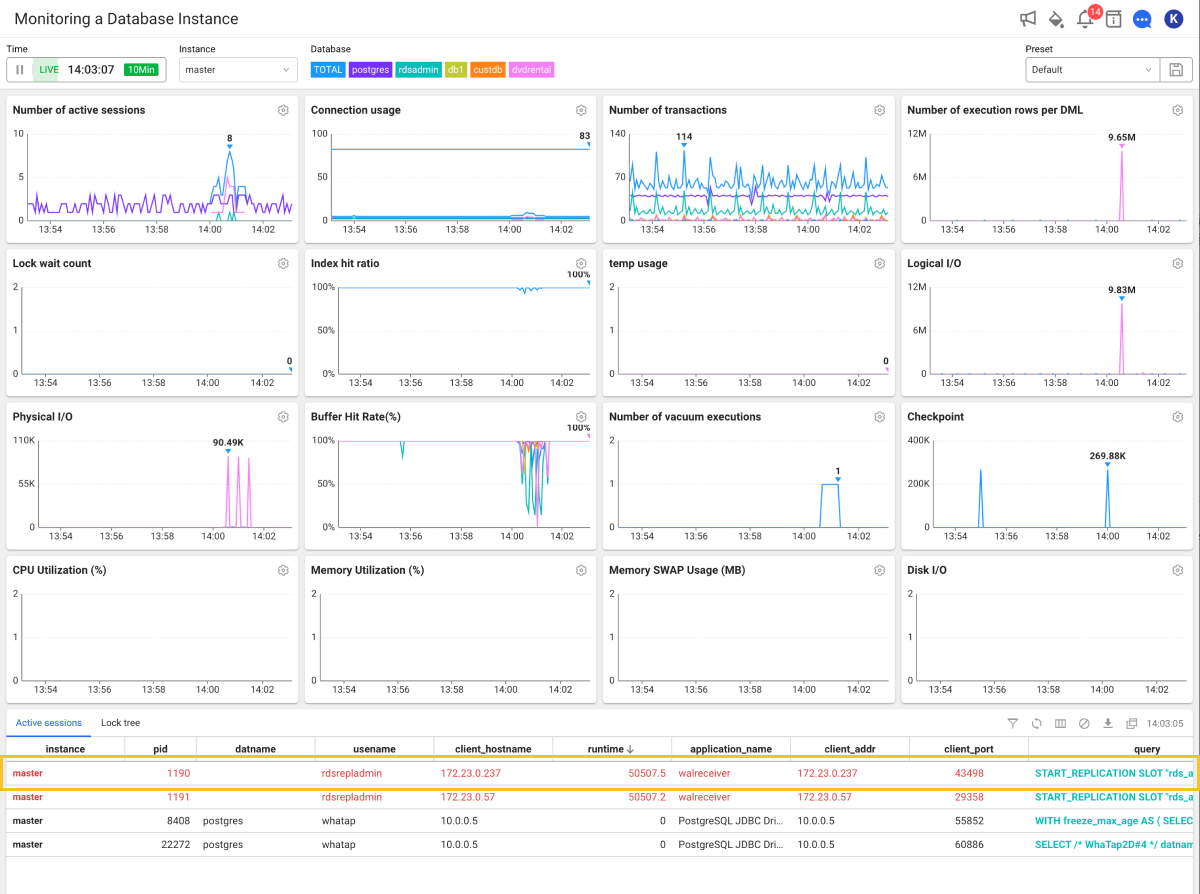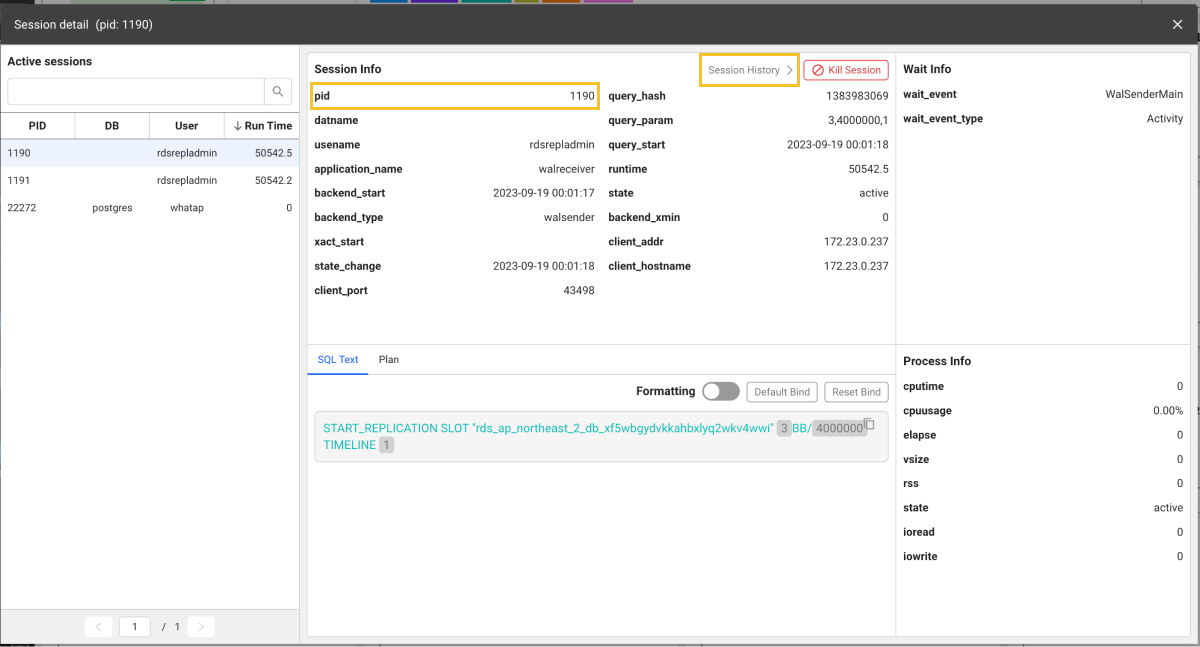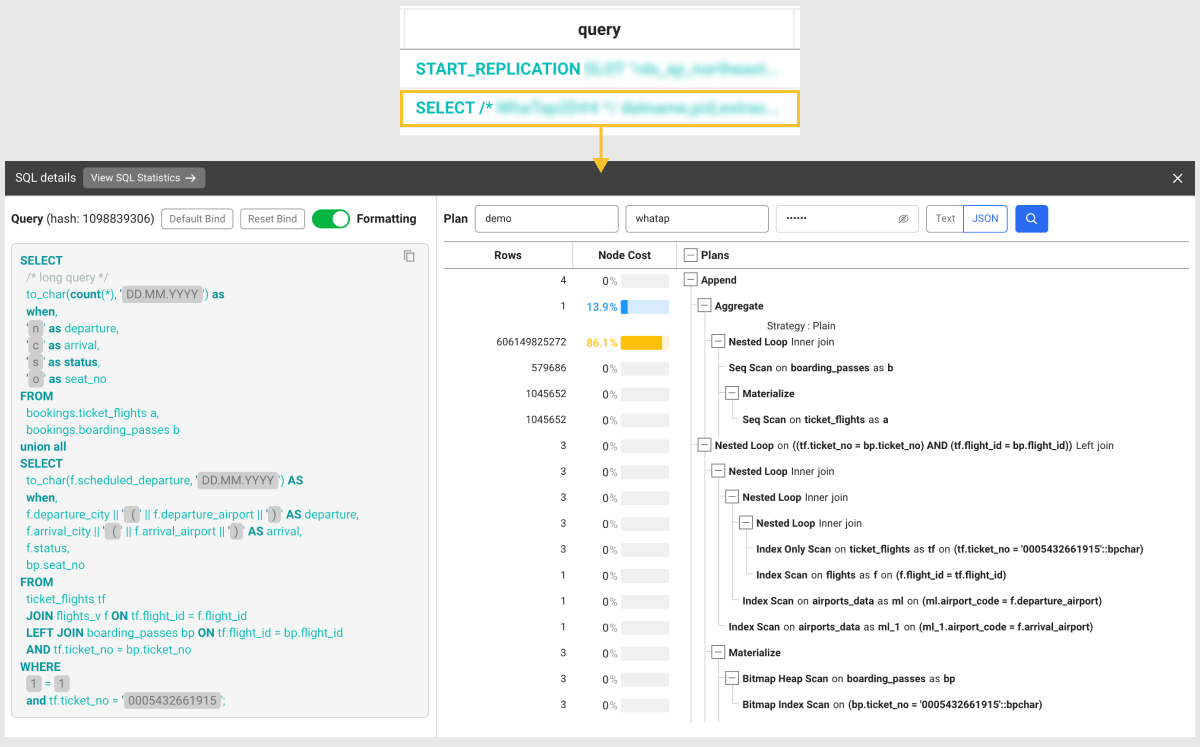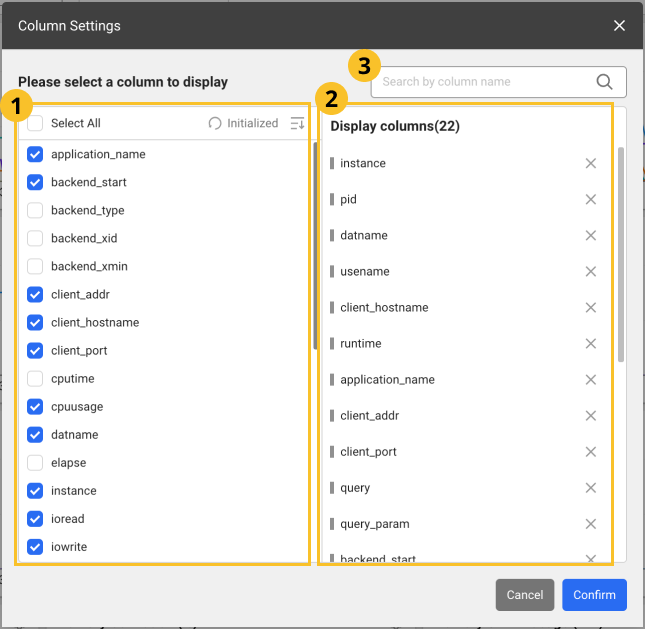Session History
Home > Select Project > Analysis > Session History
In Session History, you can see what has been performed in a specific session during the query period. It provides information that allows you to check how much resource has been used for SQL for a long-running session and analyze the causes.
Basic usage guide
You must enter the session number (Process ID) to monitor as a required value, but it is more efficient to enter through the Monitoring a Database Instance menu.
-
Go to Dashboard > Monitoring a Database Instance.
-
Select a session that is running and not ended for a long time.

-
If the Session detail window appears, select Session history.

The Session History menu appears that has searched the process ID (PID) of the selected session.
Active session data collected every 5 seconds from the selected session is used to construct a chart and its list and provide information that can be used for analysis.
-
Wait: You can see the percentage of waiting events through a chart.
-
Cpu: You can see the change trend in CPU usage through the chart.
-
Memory: You can see the change trend in memory usage through the chart.
-
Disk I/O: You can see the change trend in disk usage through the chart.
If you select the query column on the utmost right of the list, the SQL details window appears where you can see the SQL statement. It contains full texts and plan information for the selected query.
See query details

- View SQL Statistics: You can go to the SQL statistics menu where you can check statistical information related to the SQL query statement.
-
Default Bind: You can bind the part set as a variable in the query sentence to the default value.
-
Reset Bind: You can release the bound default value and check the variable.
-
Formatting: You can improve readability by applying indentation and formatting to a SQL query statement.
-
Plan: To check plan information, enter DB Name, User Name, and Password, and then select
.
-
Text: You can check plan information in text format.
-
JSON: By viewing the plan information in Json format, you can quickly find the points where bottlenecks occur.
NoteThe function to view plan information in JSON format is supported only in DBX agent 1.6.12 or later.
-
If you select a table or index while viewing the plan information in JSON format, the Object detail window appears where you can see the configurations for columns and index items in the table.

This function is supported in DBX agent 1.6.15 or later. For more information about the database roles and related settings, see the following.
Setting the table columns
You can hide the table header columns or add any of them. You can also change the column order. Select .

-
After configuration, select Confirm to apply the settings in the table.
-
In the
search bar, enter text to search the desired columns. Only the columns that meet the entered text are displayed.
-
Images may differ depending on the product, project, or menu.
Adding columns
From the list, select the items to add as table header columns. To select all items, select Select All.
Deleting columns
From the list, unselect the columns to delete. Alternatively, select
on the right of the item to delete from the
list.
Changing the column order
Drag an item to reposition from the list, and then move it to the desired position.
Initializing the configuration
To cancel all changes and reset them, select Initialized.